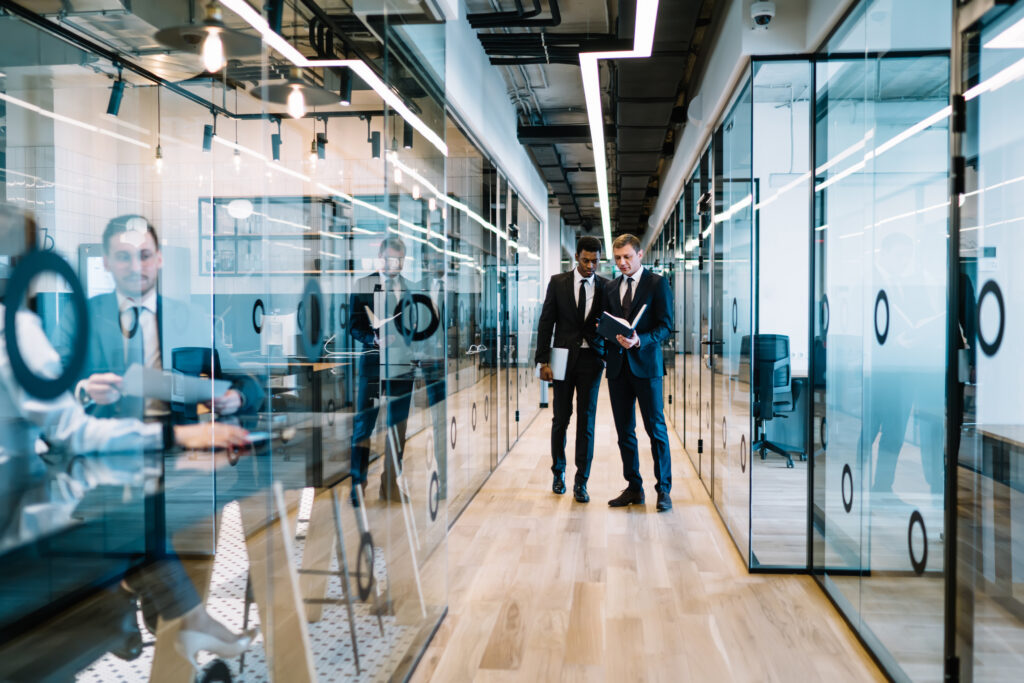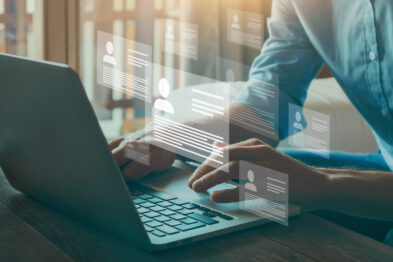What is a Smart Office?
The workplace has transformed. Businesses have started leveraging the latest technologies and capabilities of the Internet of Things (IoT) to improve productivity, collaboration and employee satisfaction. The result? Traditional offices are being replaced by the smart office.
A smart office is a workplace that uses the latest technology and analytics to help people work faster, better and smarter. In 2020, the global smart office market was worth $31.37 billion. Projections indicate that the market will grow at a CAGR of 11% to reach $90.63 billion by 2030.
Smart offices are the future of the workplace for reasons such as the evolving workforce demographic composition and shrinking traditional corporate job pool.
- Evolving Demographics: The workforce is the biggest asset, accounting for over 70% of operating costs for many service-oriented businesses. The workforce composition is transforming as Millennials and Generation Z will make up over 90% of the workforce by 2030.
- Shrinking Traditional Corporate Job Pool: The workforce will be comprised of full-time employees, part-timers, freelancers, consultants and collaborators who need seamless access to various resources and frictionless connectivity with colleagues.
In this context, aspects of workplace safety such as access control, visitor management and video management are of paramount importance for organizations. A smart office is going to meet all the safety and convenience needs of the changing demographic composition of the workforce in the future.
Read this article to understand the benefits of smart offices and the top six smart office technologies organizations can adopt to increase the safety and convenience of the modern workforce and remote work.
Benefits of a Smart Office
Traditional offices miss out on three vital challenges related to business operations:
- Improving workplace productivity
- Enhancing employee wellbeing
- Reducing operating expenses.
By transforming into smart offices, organizations can easily overcome these challenges and meet specific needs.
Increase Employee Wellbeing and Satisfaction
Smart offices increase employee wellbeing and satisfaction by eliminating all these issues with a wide range of access control technologies such as mobile access control that eliminates the need for touching doors, a visitor management system that gives visitors access to office premises only after verifying their health status and smart sensors that provide real-time occupancy of desks and people’s movements in areas such as the cafeteria and reception.
Strengthen Productivity and Employee Relationships
There are two major challenges for employers in hybrid workspace settings:
- Improving workplace productivity.
- Building strong relationships with employees.
Lighting, temperature and security can influence workplace productivity. Smart offices, with the help of IoT sensors, can control the lighting and temperature at the workplace to create a work environment conducive to employee experience. Security tools such as surveillance cameras, smart locks, and smart doors ensure employees rather focus on work than their safety at the workplace.
Additionally, the smart office provides seamless communication between the employer and employees with the help of collaborating, chatting, and file-sharing tools. These tools enhance employee relationships by bridging the communication gap between the employer and employees.
Better Utilize Space and Save on Resources
As the hybrid working model is here to stay, businesses should redesign the offices to optimize space and save on resources. Smart office solutions can help property teams create a workspace that accommodates more people and uses fewer resources.
For instance, a smart initiative, like a real-time occupancy tracking app, may help optimize employee time searching for a desk. Real-time occupancy tracking, which promotes the hot-desking approach, is important because 39% of the U.S workforce waste at least 60 minutes a week searching for available desks and conference halls.
Additionally, an IoT-enabled HVAC system may help property managers reduce energy consumption by automating heating and air conditioning. It monitors the occupancy within the building and turns off the cooling or heating when nobody is there in a room.
Top 6 Smart Office Technologies to Incorporate Today
Evaluating and finding suitable smart office technology solutions can be an overwhelming experience. Here are the top six smart office technologies that can improve the employee work experience.
1. Cloud-Based Access Control
Mobile access control is a technology that allows employees to access every nook and corner of the office building without touching doors. It enables employees to use their mobile phones to open doors and property teams to monitor the access activity from a centralized dashboard.
Genea’s cloud-based access control provides a slick dashboard from where admins can manage user credentials and monitor access activities. Depending on the company’s policies, it enables employees to use their mobile phones or physical key fobs to open doors without touching them. Another benefit of Genea’s cloud-based access control is that it allows admins to assign role-based access permissions to employees to restrict unauthorized employees from accessing sensitive data.
2. Overtime HVAC
Property teams often struggle to track and fulfill after-hours HVAC requests. The lack of an appropriate system to track and automate after-hours HVAC is leading to wasted energy, mistakes in billing and poor relationships between property owners and tenants. A cloud-based overtime HVAC technology can address these concerns by automating after-hours HVAC requests from tenants. It can also eliminate manual work and take the guesswork out of billing.
Genea’s Overtime HVAC is a cloud-based application that enables tenants to submit after-hours and on-demand HVAC requests directly from their mobile phones. Property teams can process these requests through an automated system and generate bills accordingly.
3. Smart Workspaces and Meeting Rooms
Smart workspace combines different components, including smart desks, video conference rooms, model video monitoring tools, intelligent climate and lighting control, mobile apps, cloud services and many more. These components help property teams to provide a better experience to employees without compromising on physical and virtual security threats.
Powered by intelligent technology, smart meeting rooms integrate hardware and software tools to create a seamless meeting experience for both in-person and remote attendees. Smart meeting rooms will make use of tools that facilitate wireless presentations, video conferencing, and joint editing of documents to increase the collaboration between team members.
4. Visitor Management
People, including customers, suppliers, job seekers, sales executives, external consultants, freelancers and many more, visit office premises often for various purposes. A major challenge for property teams is to manage these visitors and track their activities.
Property management teams can implement touchless visitor management into their smart offices. These systems allow property teams to collect relevant information from visitors through a mobile app before giving a digital access pass. A touchless visitor management system can increase workplace safety through special features such as QR code check-in, facial recognition, host alerts, and activity tracking.
Genea’s touchless visitor management system is designed to simplify the process of managing visitors. It ensures visitors pre-register, fill out a health questionnaire, provide details of the visit, including the purpose of visit and person to visit, before generating a QR code or a barcode that acts as an entry pass. The visitor management dashboard of Genea enables property teams to track visitor activity and customize and integrate it with video management tools that have features such as facial recognition and host alerts.
5. Video Management
Video management is an integral part of the security system that enables businesses to capture, record, store, view and analyze video feeds through surveillance cameras. Today, property teams can make use of advanced AI-enabled surveillance cameras with features such as facial recognition and door mapping. A video management system helps property teams strengthen the physical security of the building.
With the help of Genea’s integrated access control and video management, property teams can integrate AI-enabled video surveillance cameras into the access control system with an API token.
For instance, Genea Security can be easily integrated with Rhombus’ Video Management or Video Wall Eagle Eye to access features such as door mapping, facial recognition, and real-time video feeds. Genea Security can also be integrated with Cisco Meraki MV for advanced real-time analytics that play a crucial role in visitor management and emergency lockdowns.
6. IoT Sensors
IoT sensors give property teams complete control over ambiance, space, security, and assets. Property owners can integrate IoT sensors into HVACs, lights, swipe cards, surveillance video cameras, locks, fire safety alarms, and beacons to enhance the convenience and protection for users on building premises. For example, commercial real estate properties like hotels and co-working spaces can integrate HVAC systems with smart sensors to adjust the ambiance based on the temperature, humidity, and air quality.
Transition to a Smart Office with Genea Today
The future of work is shaped by the growing adoption of smart office solutions and automation tools. By transforming into smart offices, organizations can easily overcome challenges such as employee retention, workplace productivity, innovation, collaboration, and employee wellbeing. Property teams should incorporate technological advancements such as cloud-based access control, touchless visitor management system, video management system, overtime HVAC, and IoT sensors to create smart buildings that provide safety to organizational assets and reduce operating expenses.
Genea offers cutting-edge property technology with which the transition to a smart office becomes much easier. Genea’s property technology helped over 4,500 companies transform their office buildings and streamline building management operations.
- Cloud-based Access Control System: It enables property teams or security teams to manage access control operations for an entire building.
- Touchless Visitor Management System: It streamlines the way visitors get access to office buildings.
- Overtime HVAC: It streamlines the way tenants submit the after-hours and on-demand HVAC requests.
- Video Management: It provides foolproof security for your workplace by preventing unauthorized access into the building premises.
Learn how Genea’s Property Technology can help you create a smart office that improves productivity, workplace security and employee satisfaction.



